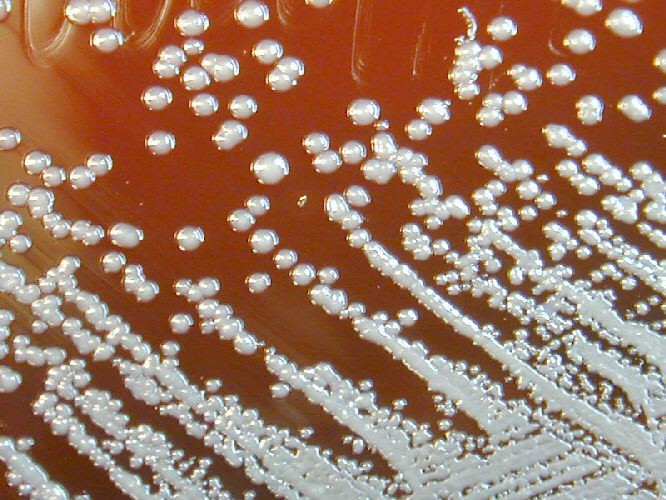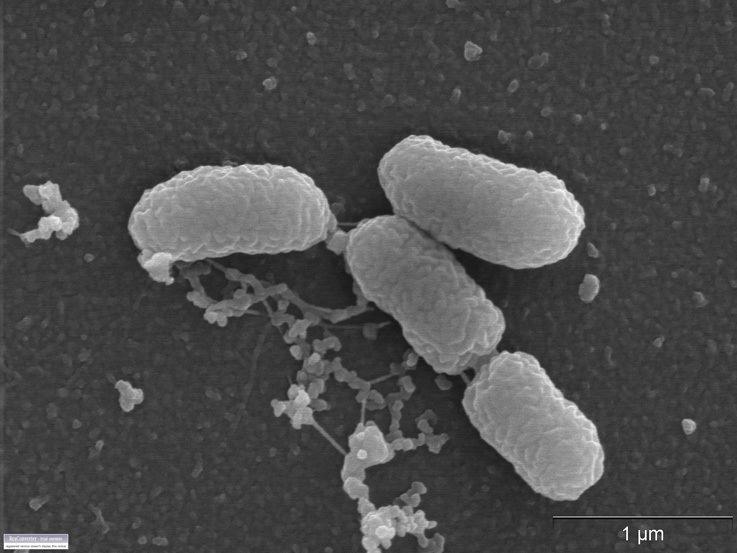Order Burkholderiales Scientific name Burkholderia Rank Genus | Family Burkholderiaceae Higher classification Burkholderiaceae | |
 | ||
Lower classifications Burkholderia pseudomallei, Burkholderia mallei, Burkholderia multivorans, Burkholderia gladioli, Burkholderia glumae | ||
Cystic fibrosis and the burkholderia bacteria strain
Burkholderia is a genus of Proteobacteria whose pathogenic members include Burkholderia mallei, responsible for glanders, a disease that occurs mostly in horses and related animals; Burkholderia pseudomallei, causative agent of melioidosis; and Burkholderia cepacia, an important pathogen of pulmonary infections in people with cystic fibrosis (CF).
Contents
- Cystic fibrosis and the burkholderia bacteria strain
- Bacteria burkholderia wmv
- History
- Taxonomy
- Species
- References

The Burkholderia (previously part of Pseudomonas) genus name refers to a group of virtually ubiquitous Gram-negative, obligately aerobic, rod-shaped bacteria that are motile by means of single or multiple polar flagella, with the exception of Burkholderia mallei which is nonmotile. Members belonging to the genus do not produce sheaths or prosthecae and are able to utilize poly-beta-hydroxybutyrate (PHB) for growth. The genus includes both animal and plant pathogens, as well as some environmentally important species. In particular, B. xenovorans (previously named Pseudomonas cepacia then B. cepacia and B. fungorum) is renowned for being catalase positive (affecting patients with chronic granulomatous disease) and its ability to degrade chlororganic pesticides and polychlorinated biphenyls (PCBs). The conserved RNA structure anti-hemB RNA motif is found in all known bacteria in this genus.

Due to their antibiotic resistance and the high mortality rate from their associated diseases, B. mallei and B. pseudomallei are considered to be potential biological warfare agents, targeting livestock and humans.

Bacteria burkholderia wmv
History
The genus was named after Walter H. Burkholder, plant pathologist at Cornell University. The first species to receive membership to the genus were transfers from the Pseudomonas genus, on the basis of various biochemical tests.
Until recently, the Burkholderia genus was inclusive of all Paraburkholderia species. However, the Paraburkholderia genus is phylogenetically distinct, and can be distinguished from all Burkholderia species on the premise of molecular signatures that are uniquely found for each genus.
Taxonomy
Burkholderia species form a monophyletic group within the Burkholderiales order of the Betaproteobacteria. There are currently 48 validly named species that can be distinguished from neighbouring genera (i.e. Paraburkholderia) and all other bacteria by conserved signature indels in a variety of proteins. These indels represent exclusive common ancestry shared among all Burkholderia species.
Within the genus, there are three distinct monophyletic clusters. One group consists of all species belonging to the Burkholderia cepacia complex, another clade comprises B. pseudomallei and closely related species, and the last clade encompasses of most of the phytogenic species within the genus, including B. glumae and B. gladioli . Conserved signature indels have also been discovered that are specific for each of these subgroups within the genus that aid in demarcating members of this extremely large and diverse genus.
Species
List of species:
Note: Several Burkholderia species not listed here have been reclassified as Paraburkholderia
List of Candidatus species (proposed but unculturable)
